
Tour of Israel and Jordan
Mike and Judy Henderson
November 14-27, 2017
I'm going to leave this map up so that you can see where we are.

+++++++++++++++++++++++++++++++++++++
11/22/2017 (Wednesday) It was another early departure this morning. We checked out of the hotel and were on the road by 7am. We're heading to Masada, and then to Jordan.
Our trip to Masada takes us out of Israel and through the West Bank. On the way, we saw some Bedouin encampments along the road. Our guide told us that the Bedouin are generally no longer nomadic. Their poverty is obvious.
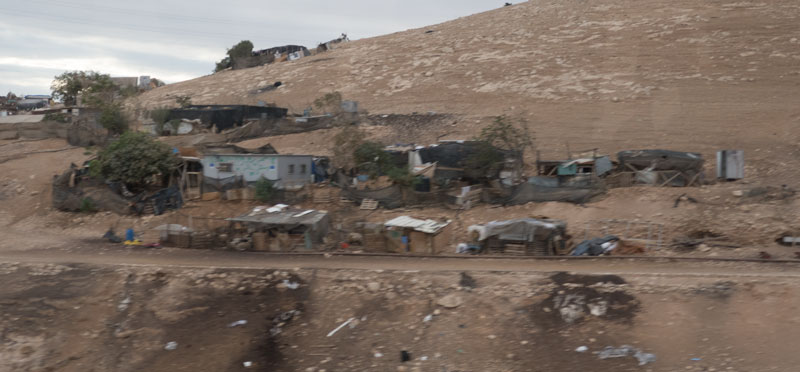
Soon we were on the road along the Dead Sea. The Dead Sea is about 1,400 feet below sea level, and increasing as the water level falls. The level of the Dead Sea is losing about 3 feet per year, because the water that would flow into it from the north has declined due to reduced precipitation in that watershed, people are using water in the watershed for irrigation, and the population has increased.
There's a project to pipe water from the Red Sea to the Dead Sea, Sometimes called the Red-Dead project. Jordan has a very serious water shortage and this pipeline will allow them to use some of the water for desalination to provide potable water for the country.
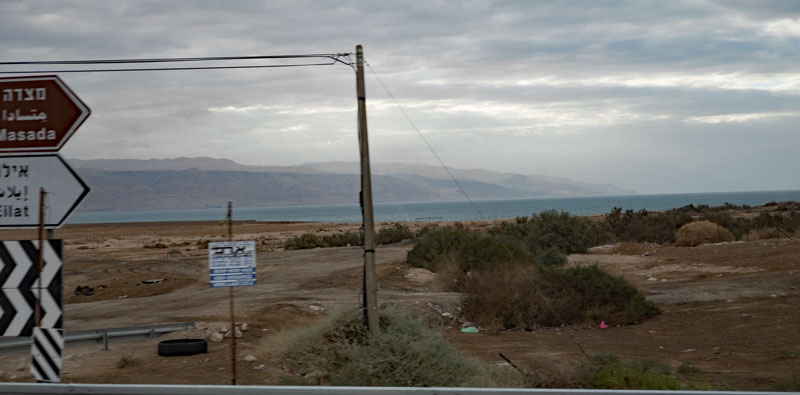
Sunlight over the Dead Sea.
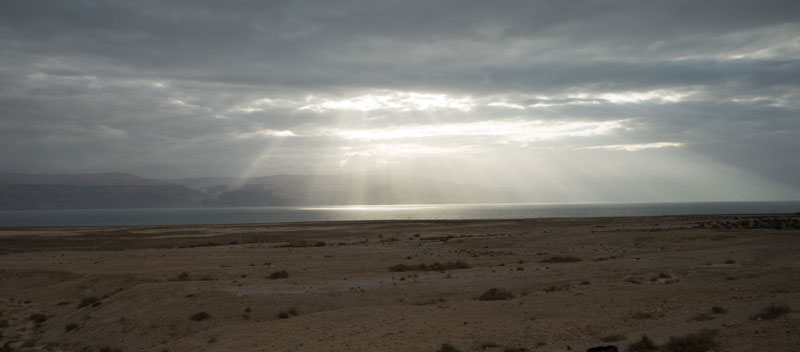
We eventually arrived at Masada. The top of Masada is about 40 meters above sea level but about 460 meters from the level of the Dead Sea.
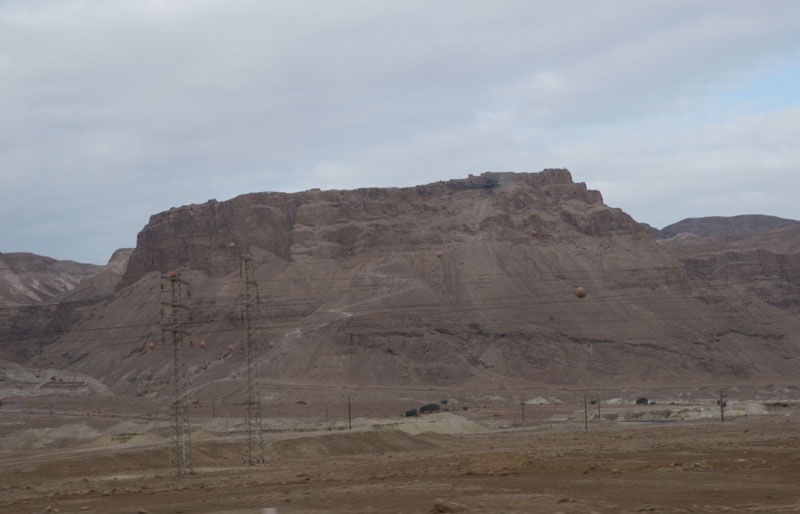
A short digression about Masada. The traditional story is that a band of 960 Jews occupied Masada during the First Jewish-Roman War in 66-73CE. The Romans encircled the fortification but the narrow path up to the top made an assault impossible. The Romans would have to come up one at a time, while the Jews could mass at the top of the trail.
So the Romans began to build a ramp on the side of the mountain so that they could attack in mass. When the Romans completed the ramp, it was obvious that the Jews could not repel the Romans so they decided to commit suicide, including killing their wives and children, rather than become slaves.
This story comes to us from Josephus, a Jew who worked with the Romans. He was in Rome, and never visited Masada. Historians believe that he consulted the journals of the Roman commanders at Masada when writing his story.
But his story has not held up to logic or archeological evidence. Josephus gives detailed descriptions of the activities of the Jews prior to the final siege, including the purported speech of the Jewish leader to his followers advocating that they commit suicide. But since none of the men survived (one woman and a few children are reputed to have survived but they would not have been at the meeting), whatever the Jewish leader said is lost in time. It's obvious he embellished the story, perhaps to make it more interesting to his readers.
Additionally, although Josephus claims that there were 960 Jews on the mountain top, only 28 sets of bones have been found. It's unlikely that the Romans would have carted the bodies of the dead Jews down the mountainside, and it's also unlikely they would have just dumped the bodies over the side because they had encampments all around the mountain. What happened on the mountain when the Romans finally reached the top is lost in history.
But Masada is part of the folklore of Israel and, I expect, will remain so.
[Update: Here's a link to more about the story of Masada.]
Here's a view of the Roman ramp, as it exists today. It has weathered over the centuries but you can see how massive it is. The Romans moved a lot of dirt.
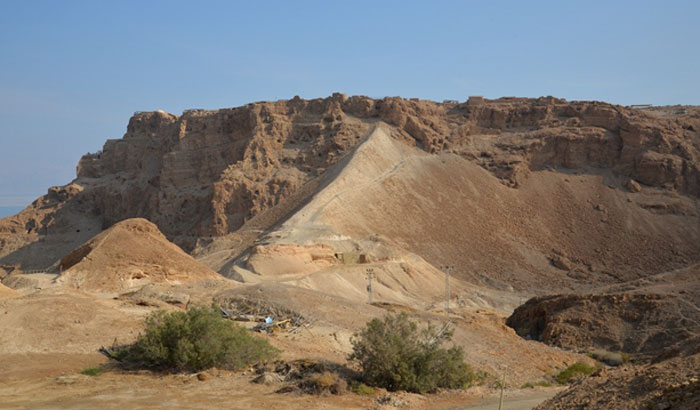
We took the cable car to the top. From the cable car, we could see people walking up the snake path. I don't know if that's the same path as during Roman times, but you can see how it would be impossible to mass a force of soldiers to attack the fortress. They would be strung out on the path with few in the forefront.
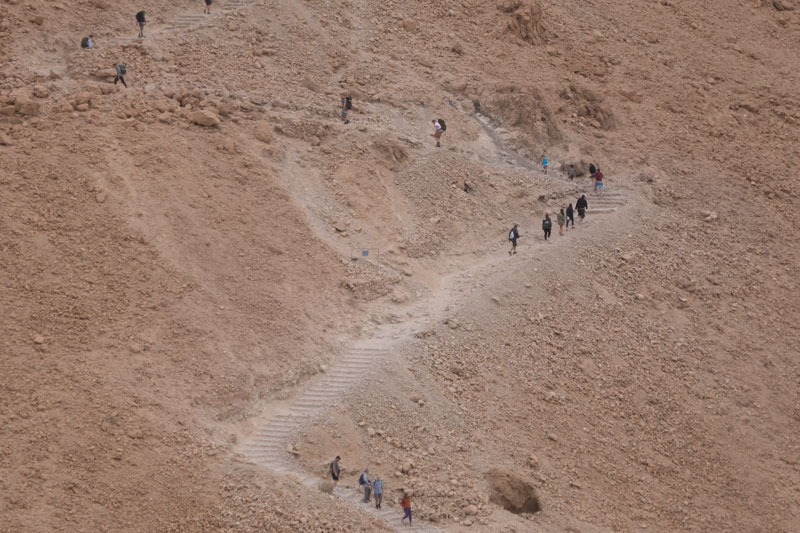
A view of the terrain from the cable car.
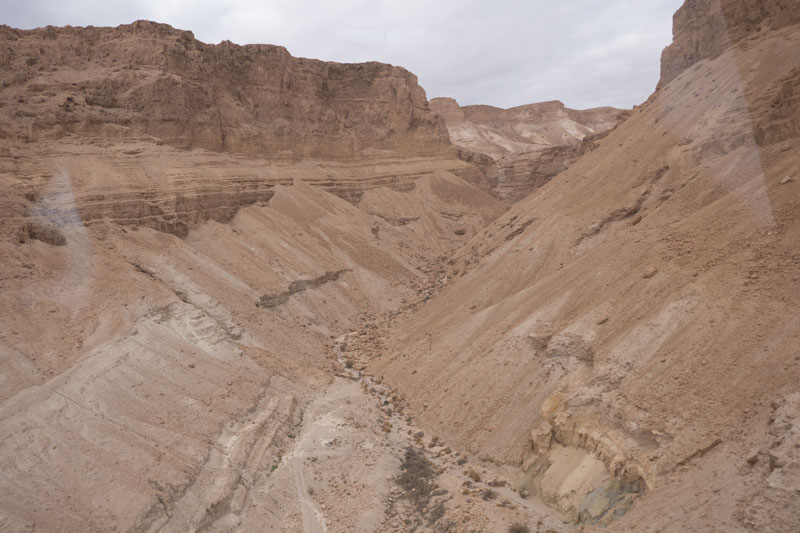
The other cable car going down, just so you can see what they look like.
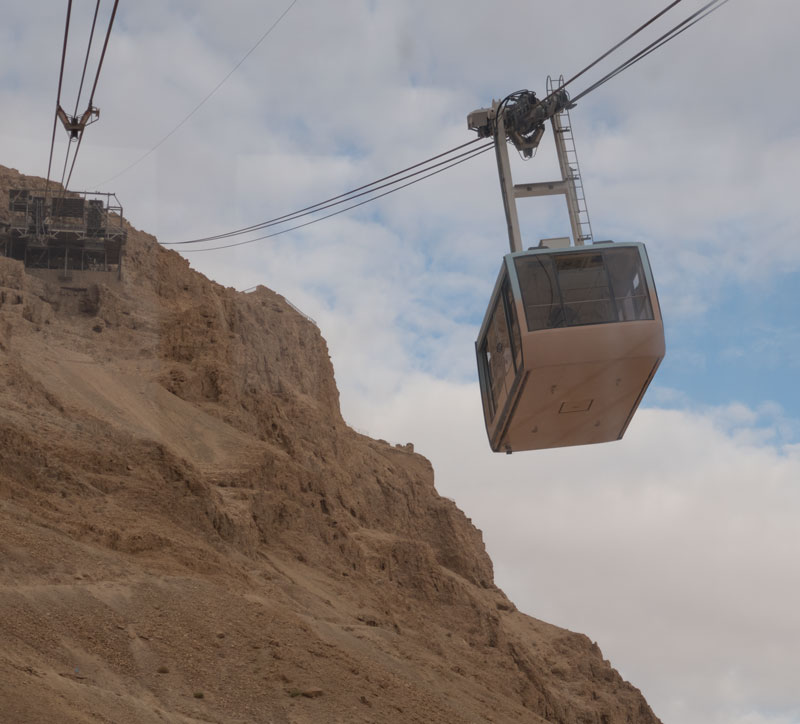
We arrived at the top.
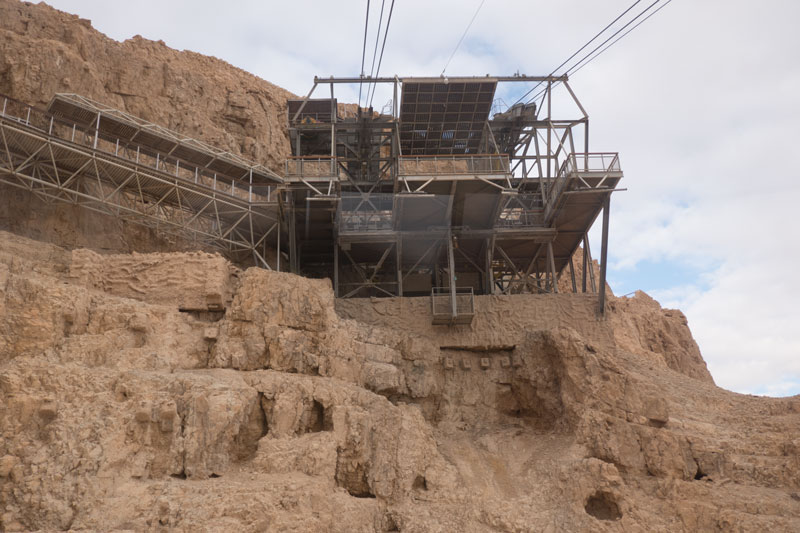
And here's the walkway to the plateau.
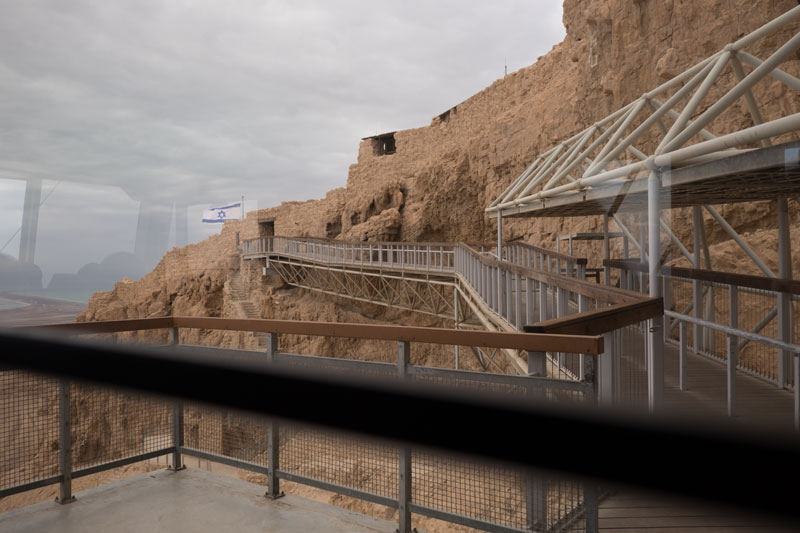
It's very hard to show pictures of ruins - they don't make much sense to the viewers. Here's our group at one of the "stations", mainly just to show the group. Most of what the guide covered was the operation and facilities of Masada during the time of Herod the Great, which was between 37 and 31 BCE. So it was a good many years before the Jewish zealots took the fortress.
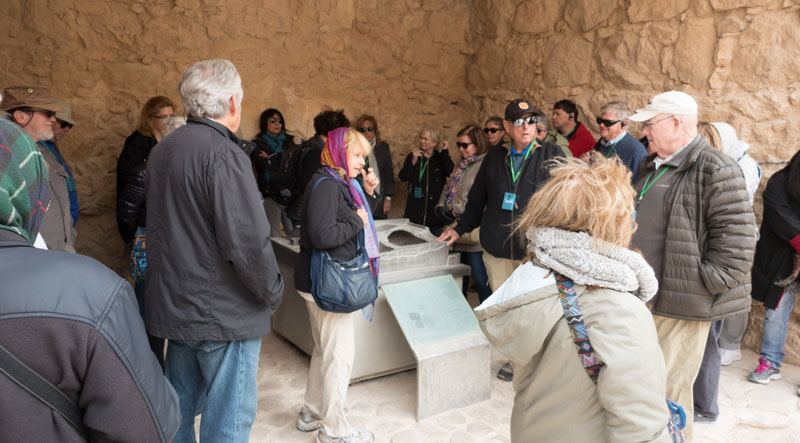
They had a "hot room" at the facility. These posts supported the floor and hot gases from a fire passed under the floor. You'd have to have wooden shoes to walk on the floor because it would be so hot.
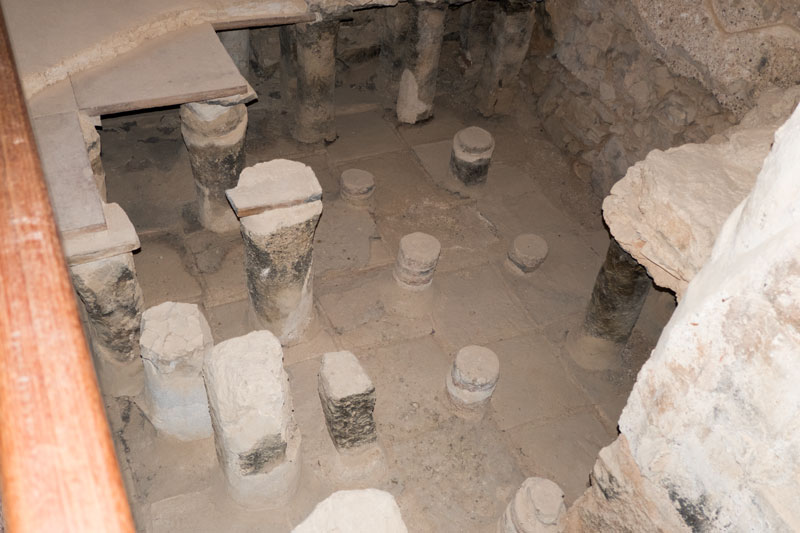
Water was a problem, and this station explained how water was brought to the fortress.
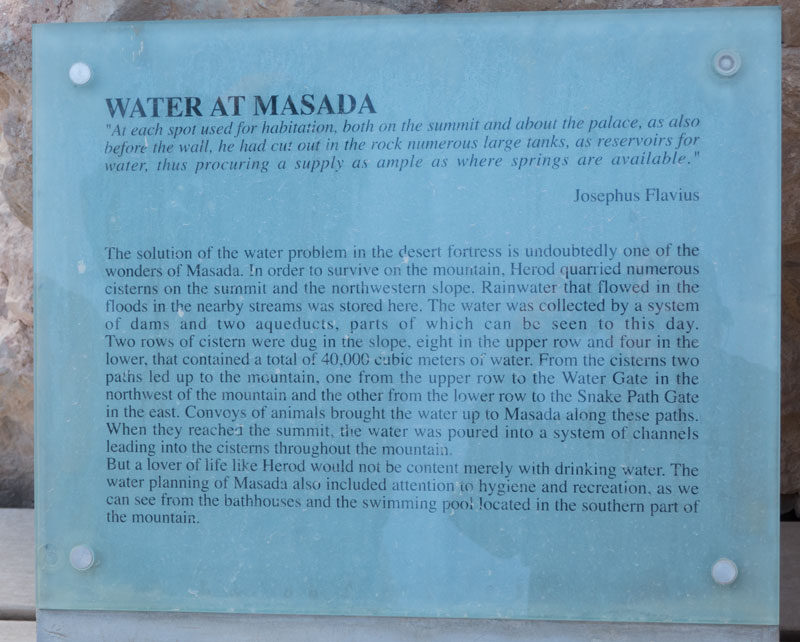
A model showing the aqueducts.
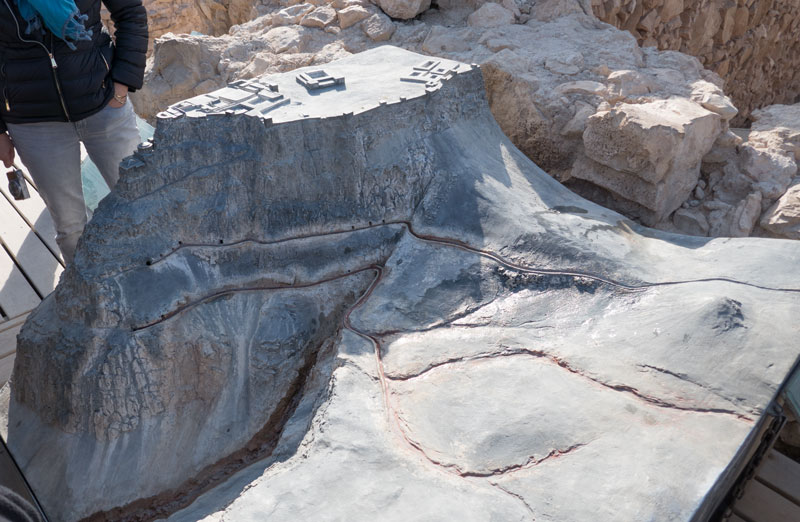
A view of the remnants of a Roman encampment below the mountain.
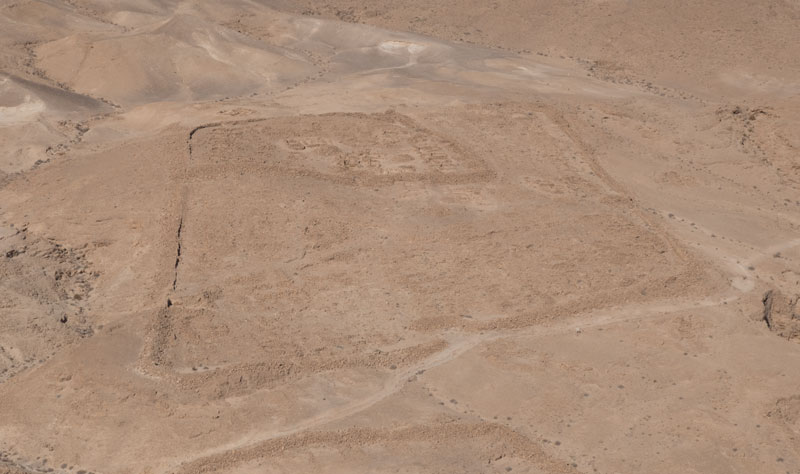
Here's a view of the Roman ramp from the top of the mountain.
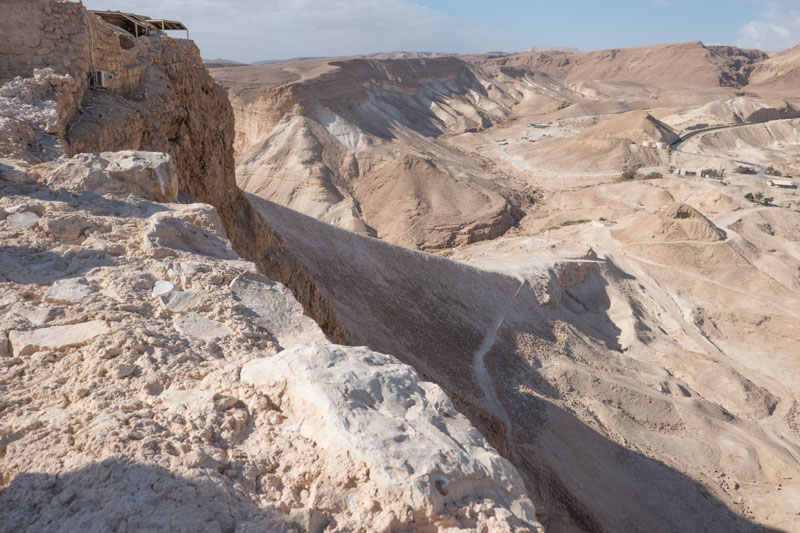
A bit of the story, according to Josephus.
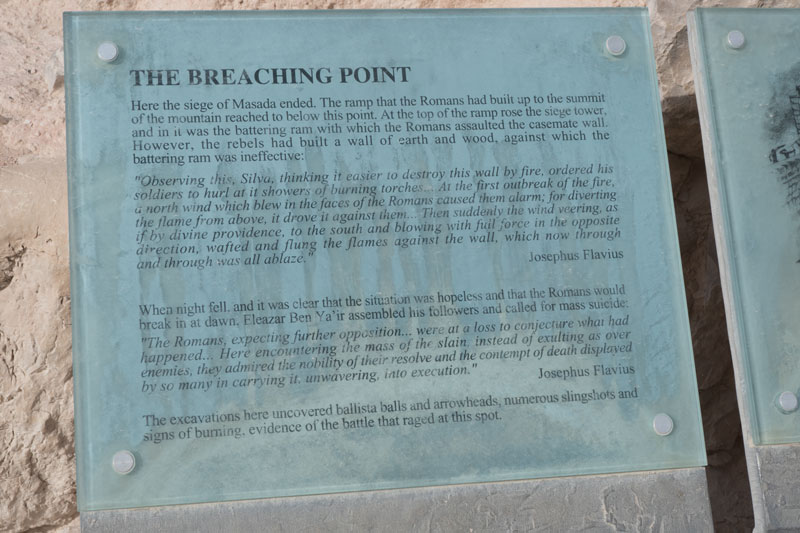
While there's no context here, this is a ruin of some living or administration area.
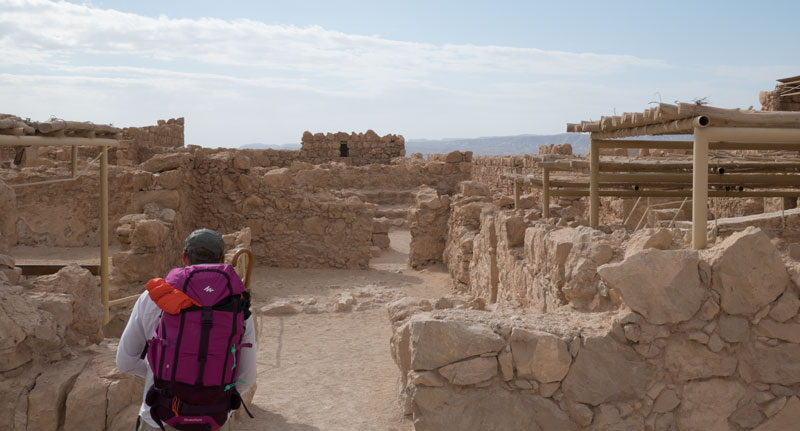
And that was the end of our tour of Masada. We were on the mountain about two hours and had a good view of the facility. We headed back to the cable car. They can put 80 people on a cable car and I think we had that many on the way down.
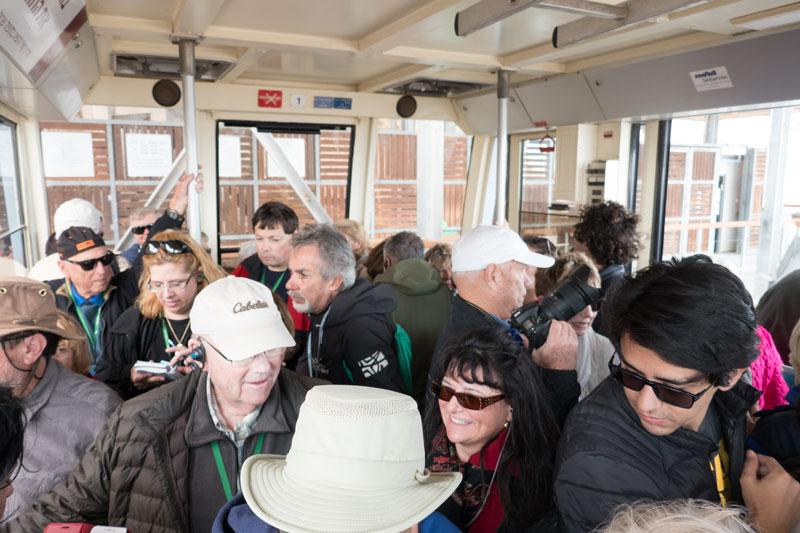
Then we headed towards Jordan. There are two Israeli checkpoints on the road, before you get to the Jordanian Passport control facility. Here's the first Israeli checkpoint.
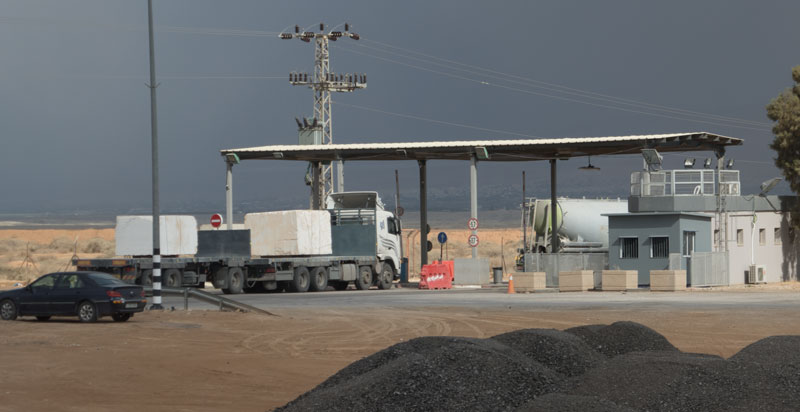
There was an all-woman crew manning the checkpoint, so people on the bus were taking pictures of them. There was one woman Israeli solder in brown and perhaps three checkpoint people in non-soldier garb.
One of the non-soldiers noticed Judy taking a picture and motioned for her to get off the bus. While we did not know this, pictures are prohibited at a checkpoint. Not, I assume, because of the techniques used to screen vehicles - those are probably very well known to the drivers that frequent the checkpoint - but because it could identify the people manning the checkpoint.
Anyway, they questioned Judy about where she had been and then had her delete the pictures she had taken - and then they let her go. But that took about 10 minutes, and we were all pretty worried about what would happen.
While Judy was being questioned, the Tauck tour guide started telling us that we were the only group he ever had that did not know that pictures were prohibited at checkpoints. This didn't go over very well with me. It was obvious that many people on the tour did not know they were not supposed to take pictures at a checkpoint. A better statement would have been, "I'm sorry I didn't remind you not to take pictures at a checkpoint."
But it all worked out. They eventually let Judy go and she re-boarded the bus and we continued to Jordan.
The Jordan passport control was straightforward and we got through quickly. They took our bags off our Israeli bus and moved them to a Jordanian bus.
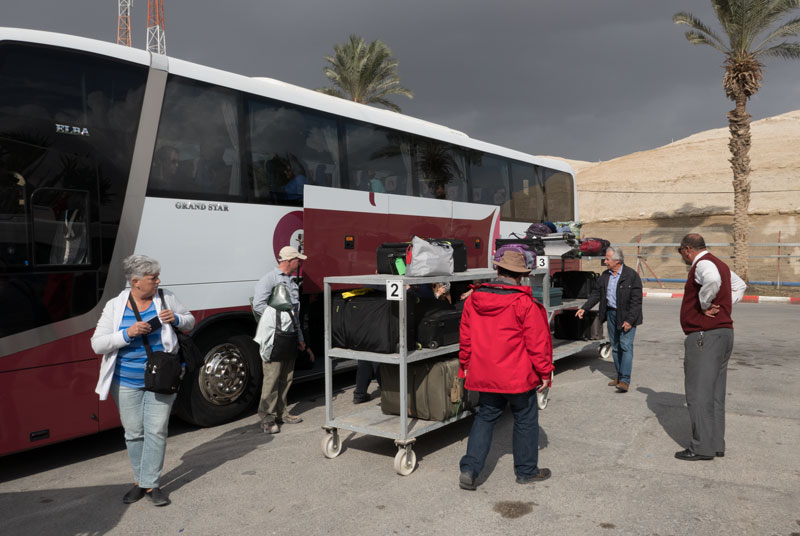
Once we crossed the Allenby Bridge we stopped at an Jordanian control point to meet our Jordanian guide who will be with us for our time in Jordan.
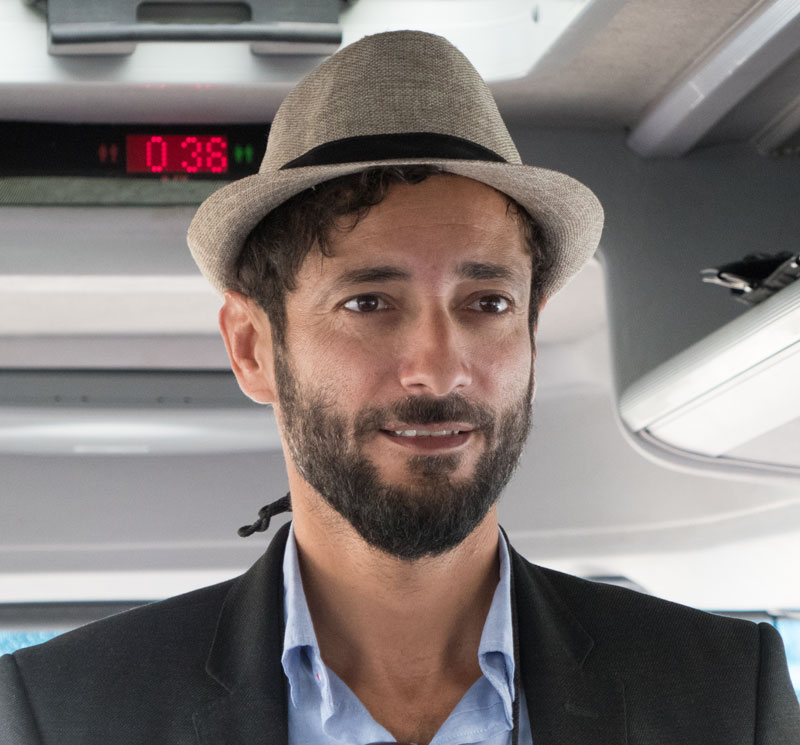
He collected all our passports and took them into the office. It took quite a while - maybe 30 minutes - for the Jordanian passport people to process all the passports. But eventually they brought the passports back to us and we continued to a restaurant for lunch. It was the (by now) usual lunch of many small dishes shared with the table.
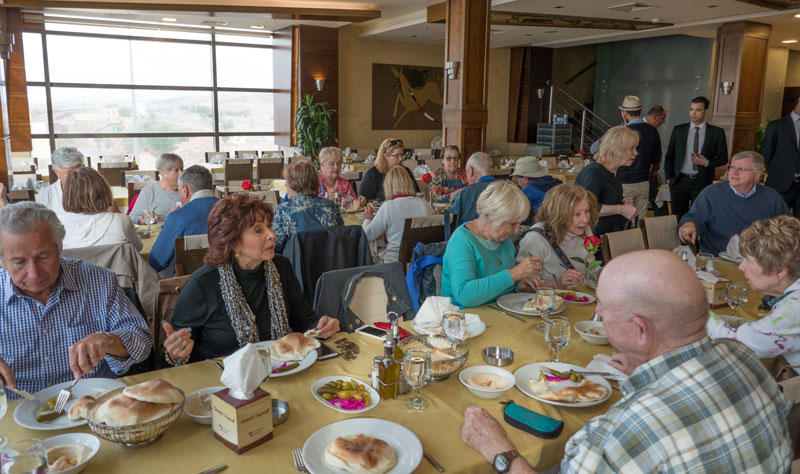
Then we went to the Movenpick Hotel, a Swiss hotel chain. It's not the Waldrof Astoria but it's a very nice hotel. This is actually a picture of the back of the main building , from the garden.

Most of us walked down to the Dead Sea once we were checked in. Here we are at the shore.
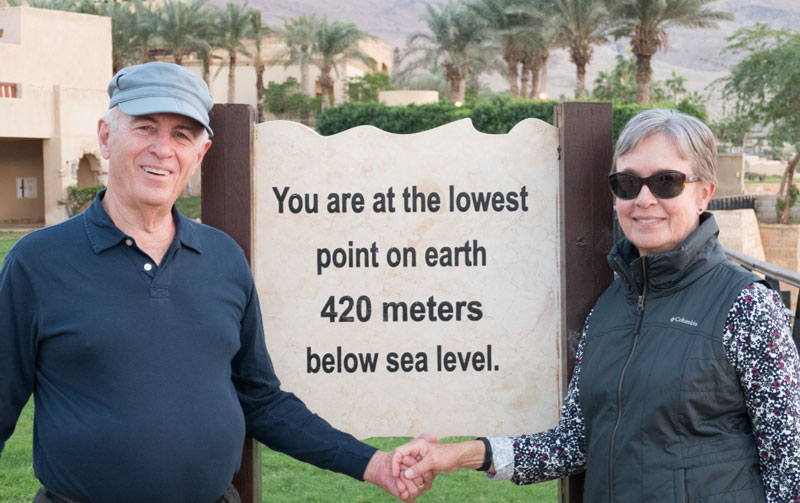
We watched the sun go down over the Dead Sea and later had dinner with our friends.
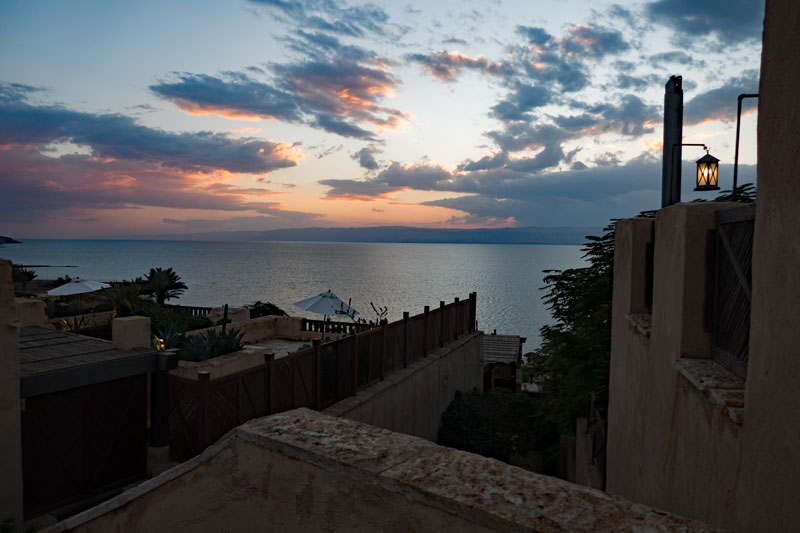
Our adventure continues here